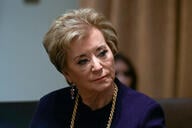You have /5 articles left.
Sign up for a free account or log in.
Athletics, administration, academic programs -- everything’s on the table. That’s what the University of California at Berkeley told professors and staff Wednesday in announcing it’s seeking a “new normal” in light of projected long-term budget deficits. While details of the structural overhaul are scant thus far, the news left many wondering if Berkeley can maintain its standing as one of the world's leading research universities throughout the process. In essence, can Berkeley stay Berkeley?
Faculty members said that remains to be seen.
“Our university has been so drastically cut back and our students' financial well-being so drastically hurt over the course of the past years that it doesn't seem to most of us that cuts of the size that are said to be coming could be assimilated,” said Mitchell Breitwieser, the Daniel E. Koshland Jr. Distinguished Chair in Writing. “There’s no fat left on the bone. But the members of the campus administration speak as if they are on the verge of coming up with a way forward. So we wait to see.”
Chancellor Nicholas Dirks said in his memo that the university faces “a substantial and growing structural deficit, one that we cannot long sustain,” and introduced what he called a comprehensive strategic planning process to align campus programs and infrastructure with fiscal realities. He warned that the process would prioritize educational quality but be inevitably be “painful” in some respects. Possible changes include cutting, combining and enhancing academic programs.
“What we are engaged in here is a fundamental defense of the concept of the public university, a concept that we must reinvent in order to preserve,” Dirks said.
Like many public research institutions, Berkeley’s been hit with declining state funding, flat tuition, and ballooning pension and health care costs -- a mix that’s become especially challenging in the last few years. Whereas the institution once received half its funding from the state, that support now makes up just 13 percent ($333 million) of its budget. Undergraduate tuition, which makes up an additional 30 percent of the budget, hasn’t risen for five years and won’t budge again until at least 2017-18, according to a plan Governor Jerry Brown put in place after many years of tuition increases. Pension and health care costs have risen 100 percent, by some $200 million, over the last seven years.
State support for capital projects also has been greatly reduced over the roughly the same period, even though Berkeley says it’s had to invest $2.1 billion in academic and residential facilities -- about 60 percent of which was dedicated to seismic safety measures. (Berkeley is the University of California’s oldest campus, and in one of the state's most earthquake-prone areas.) Annual debt payments have grown from $25 million to $100 million as a result.
The university’s current annual deficit is approximately 6 percent of its operating budget, or about $150 million. Campus sources said while that’s manageable in the short term, trend lines call for proactive sustainability measures.
Now is the moment “not just to stabilize our finances, but also to consider our future as a leading institution of higher education,” Dirks said, adding that the process has to be driven by the university’s “core mission: to enhance the educational experience we provide to students while maintaining our commitment to access, to increase the support we provide for groundbreaking research and scholarship, and to align our public outreach with 21st-century societal needs.”
Dirks said the Academic Senate, deans and administrators have been analyzing budgets and programs for months and must now transition to comprehensive planning in the same collaborative spirit -- even when things get tough. Every aspect of Berkeley’s operations and organizational structure will be under consideration, according to the memo, including:
- Redesigning academic structures, including strengthening some areas, narrowing the focus of others and combining units.
- Controlling staffing levels and adopting staff hiring “discipline” that mirrors that for faculty positions.
- Improving support for teaching and research while redesigning work processes to achieve greater “efficiency,” such as the previously adopted end-to-end review of research grant proposals.
- Making investments to improve fund-raising capacity.
- Achieving additional revenues through the Berkeley “brand,” land and other assets, such as through licensing.
- Expanding online offerings and enrollments in University Extension, as well as professional and other master’s programs that earn revenue.
In a follow-up conference call with reporters, Provost Claude Steele said the university is also considering reducing graduate student enrollment. While Dirks’s memo referenced athletics, he also clarified during the call that the university is unlikely to cut entire teams.
Asked if the process would involve faculty cuts, Dirks reiterated that everything is up for discussion. But he said the campus already suffers from a relatively high student-to-professor ratio and that it's committed to maintaining the current size of the faculty.
Dirks said he realizes faculty and staff members want to know more, and that additional details can be expected in the months ahead. Some changes will start to take effect this summer, and more significant academic and administrative realignments will take longer, he said -- though perhaps not that long. Steele said during the call that the administrators and faculty leaders are already working “feverishly” on the plan, and that it’s likely to be complete within the academic year. Updates will be posted on Berkeley’s website.
“This endeavor must not be interpreted as an abandonment of our commitment to a public mission nor [of] our efforts to advocate for increased public funding for higher education,” Dirks said. “We are fighting to maintain our excellence against those who might equate ‘public’ with mediocrity, against those who have lost faith in the need for higher education to serve as an engine of social mobility and against those who no longer believe that university-based inquiry and research have the power to shape our society and economy for the better.”
No Fat to Cut
While Dirks’s message is hopeful, questions remain about what -- if any -- chaff there is on campus. The university has been managing its deficit for several years, growing its expenses at just 5 percent per year over the last decade, on average. That's comparable to its peers, both public and private. Berkeley’s administrative head count has grown by just 2 percent annually over five years, driven by increased regulatory requirements, technology expertise and new student support services.
Benjamin Hermalin, Thomas and Alison Schneider Distinguished Professor of Finance and a professor of economics, and chair of Berkeley’s Academic Senate, said the “simple formula of cutting the fat” doesn’t apply, because the campus is already lean. So the university has to come up with creative ways to become sustainable and more self-reliant, he said, such as achieving new economies of scale and making wider use of available resources. It will be challenging, and the process inevitably will hurt, he added.
But can Berkeley stay Berkeley? Hermalin said it’s likely that the institution will change. But “the fundamentals -- that it’s an excellent university and it’s excellent at what it does and offers a great education -- I’m confident that will all continue to be true," he added."But we may not necessarily do everything in five years’ time that we do today.”
That prognosis had one caveat: that Berkeley continue its strong tradition of shared governance. Hermalin said he’d been relatively pleased with the level of administrative collaboration and disclosure thus far, and said that must continue in order for the process to succeed.
“Faculty will not accept a top-down solution, and faculty not accepting it will make it impossible to implement,” he said. “That’s not a threat, it’s just the way we work here. And I think everyone understands that, whether they’re an assistant professor or the chancellor.”
David McCleary, a Ph.D. candidate in molecular and cell biology at Berkeley and regional vice president of the University of California’s United Auto Workers-affiliated graduate student union, was less pleased, and said the union hadn’t been consulted ahead of Dirks’s announcement. He said he also regrets that the plan made no reference to asking for more state funds, and “punched down instead of up.”
Dirks addressed some of those concerns in the conference call, saying that the system president’s office handles state funding issues, and that -- at least in the foreseeable future -- substantially increased state support was unlikely.
McCleary said the union also opposes any plan to shrink graduate student enrollment, since the state and national economies are both moving to more “white-collar,” creative jobs in which a doctoral education is an asset. He also wondered how cutting graduate student enrollment would square with possible cuts to academic departments, after which the university would presumably need more graduate student instructors, not fewer.
Over all, he said, the plan seems “like a pathway to mediocrity, not a pathway to excellence.”
Hermalin said it was hard to be affiliated with Berkeley -- viewed by many as the country’s top public institution -- and not feel sad or angry, or both, about the position in which it finds itself. But he said the university does have an opportunity to lead by example, asking questions and solving problems facing many campuses.
"We're not unique and I don't think we're the canary in the coal mine -- certainly we can look around the country to all the states that have had to reimagine what a top-flight public research university looks like," he said. "How does it fulfill its public mission while at the same time preserving excellence? It's not 'or,' in that we can't really fulfill our mission unless we're excellent, and providing access to the tens of thousands of students we serve."
John Aubrey Douglass, a senior research fellow at the Center for Studies in Higher Education at Berkeley and author of The New Flagship University, said Berkeley’s is “a continuing story of a mismatch between revenues and the operational and capital costs of maintaining a world-premier public research university.”
In the midst of the recession, he said, Berkeley launched a plan called Operational Excellence, which included significant cuts in staffing, a halt to faculty hiring and attempts to centralize academic and administrative support services -- “the reoccurring elixir for dealing with budget deficits.”
Another big impact of that effort was growing student-to-faculty ratios. Now, Douglass said, “with labor costs being the largest single operating expenditure for universities, one can assume something will have to give once again in this area.”
Douglass underscored that raising tuition is not an option and said Berkeley faces additional university system pressure to increase enrollment among in-state students “without a clear long-term plan on how to fund this increased workload.”
Henry Reichman, a professor of emeritus of history at California State University at East Bay and chair of the American Association of University Professors' Committee A on Academic Freedom and Tenure, weighed in on the plan on the association's Academe blog, saying he hoped the best for Berkeley -- from which he earned his doctorate -- but expected less.
"Reference to a 'new normal' will, of course, be familiar to faculty members at many other institutions, where administrations have begun — and far too frequently imposed — 'planning' initiatives that at best prove inordinately wasteful and unproductive and at worst decimate genuine education in the name of accommodating an allegedly changed reality," he wrote. "It remains, however, to be seen whether or not this will again be the case now that the administrative-corporate fetish for 'strategic planning' has arrived at the nation’s most prestigious public research institution. ... [A]t this point I hope they will excuse me if I say, on behalf of my colleagues at the 'lesser' state institutions, 'Welcome to our world!'"





